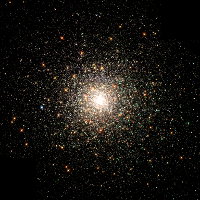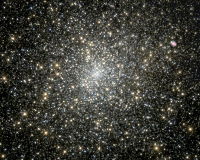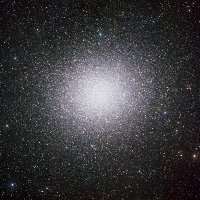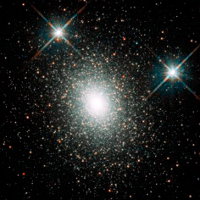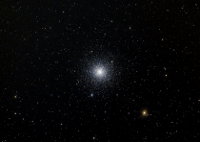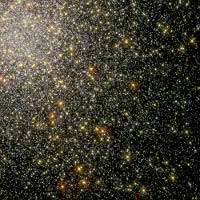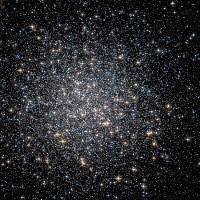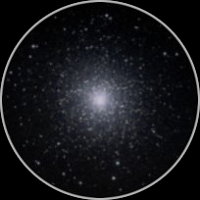Each galaxy has a set of globular clusters, and the larger the galaxy's mass, the more clusters it has. Dwarf galaxies have just a handful, and the largest galaxies known have about 13,000. The Milky Way has around 160, but it's hard to get an exact count because the dust in the spiral arms blocks our view. Most of the stars in a galaxy orbit in the same general direction, but the globular clusters orbit in any direction in a vast cloud around the galaxy.
The stars within a globular cluster orbit the center in all directions. They are very close together compared to stars in our neighborhood, but they are still separated by trillions of kilometers, so they very rarely collide. If they do run into each other though, they will create a new star that is much hotter and brighter than the rest. Planets seem to be rare in globular clusters, but if Earth was in one, our night sky would be filled with dozens of stars brighter than the planets, and probably a couple as bright as the moon!
The difference between globular clusters and galaxies is mainly one of scale: galaxies are millions of times larger. The clusters have no gas or dust, but neither do most elliptical galaxies. Recent observations suggest that each globular cluster may have a large black hole in the center. Almost all galaxies also have a black hole in the center. The mass of a galaxy's black hole is always 0.15 percent of the mass of the galaxy's central bulge, and globular clusters' black holes seem to follow that same rule. More observations will be needed to confirm this.
We know that globular clusters consist stars almost as old as the universe itself. However, we don't know where they came from, or how their formation relates to the formation of the galaxies. This is one of the mysteries of astronomy that may finally be solved with the next generation of extra-large telescopes.

